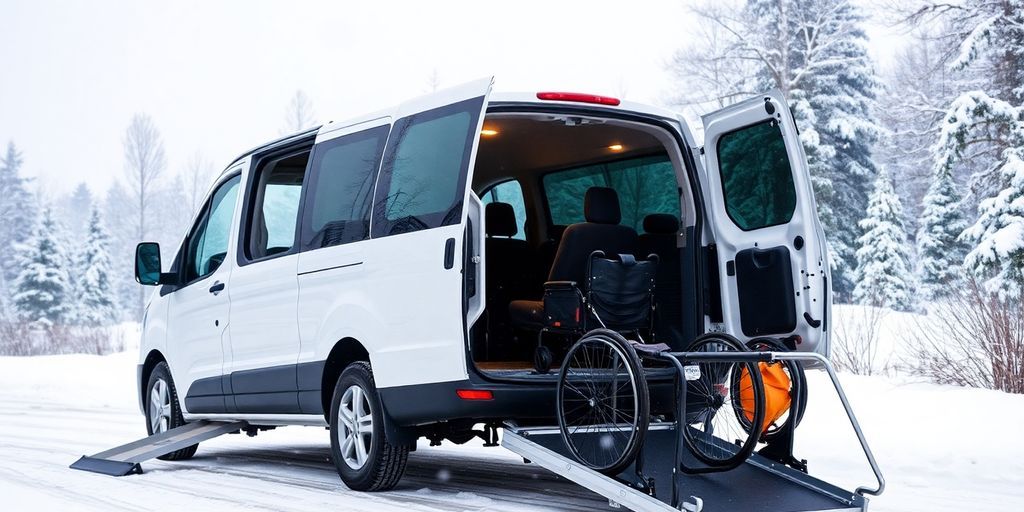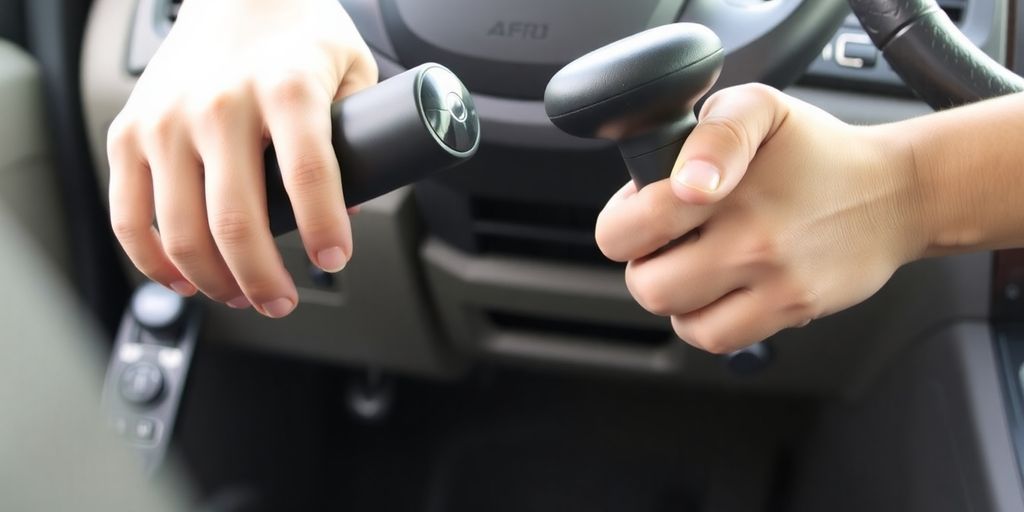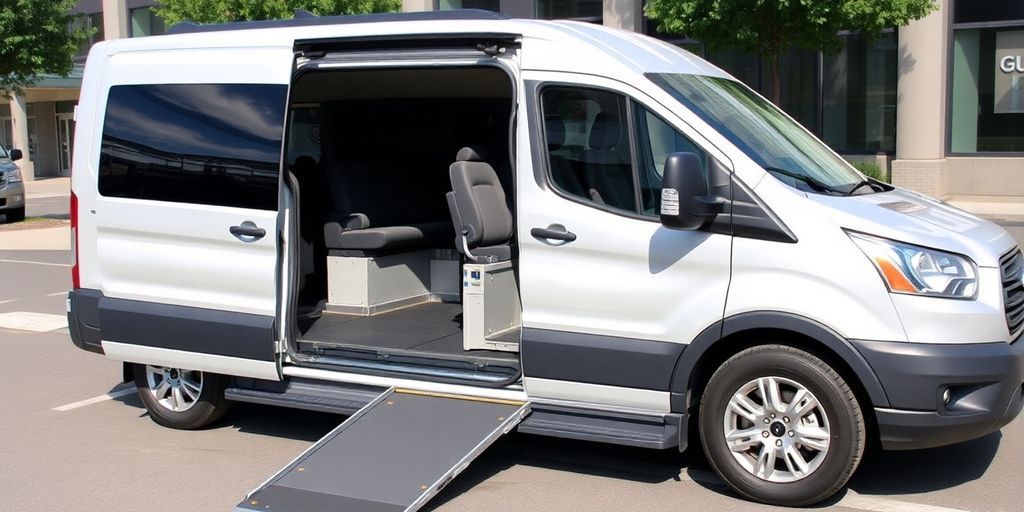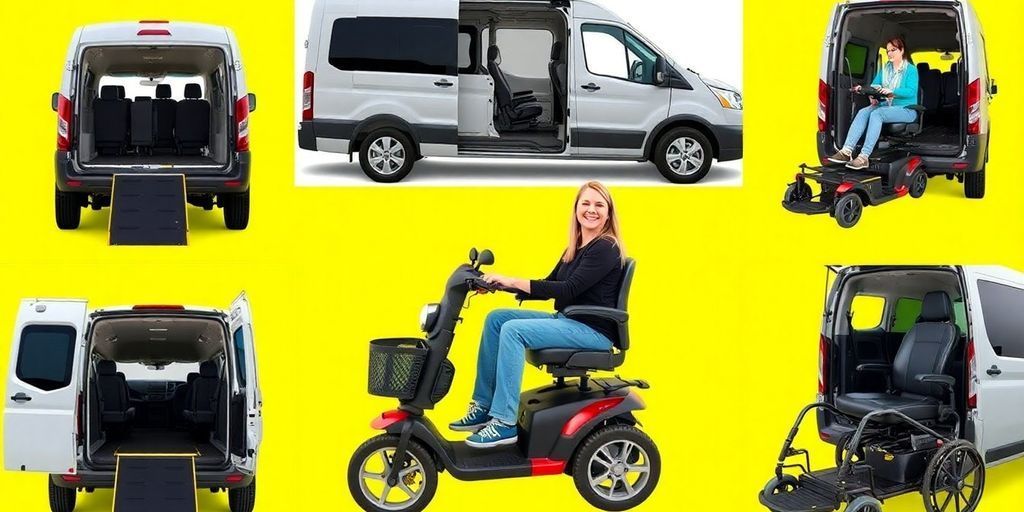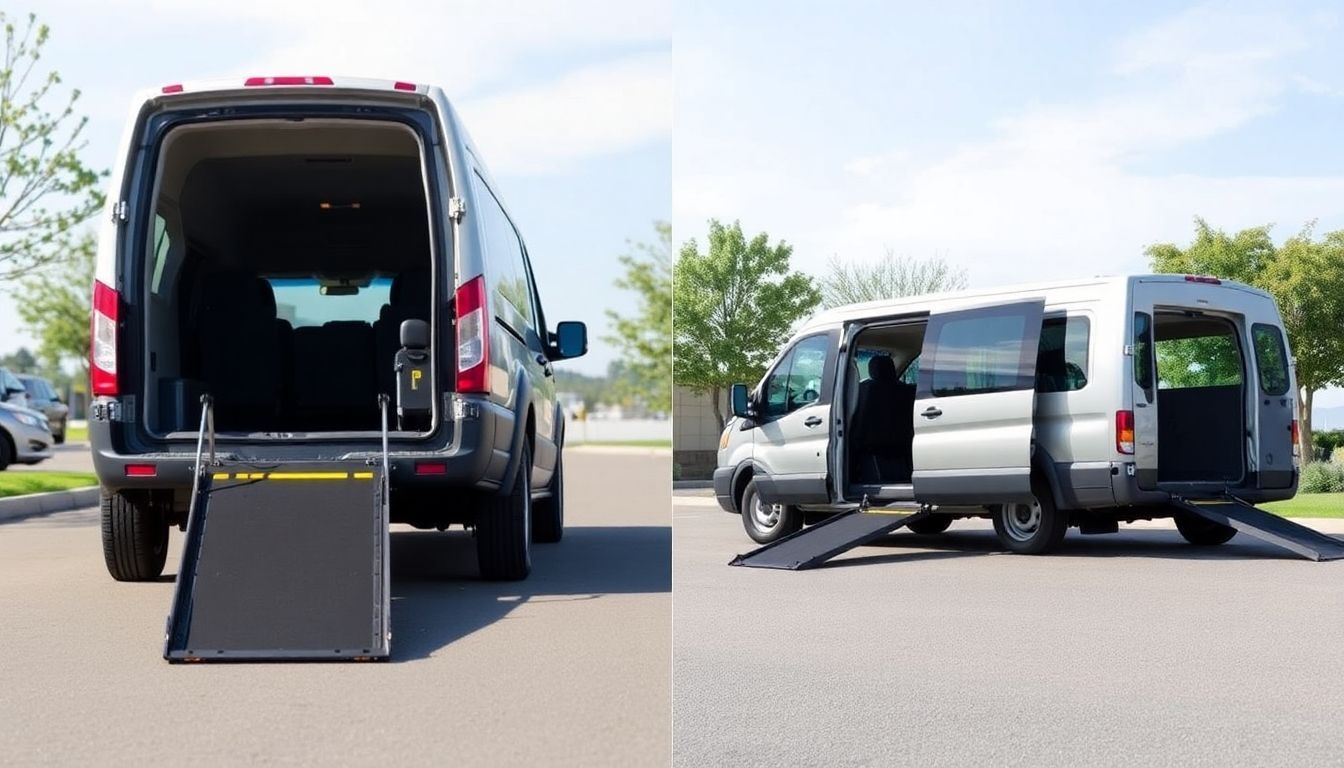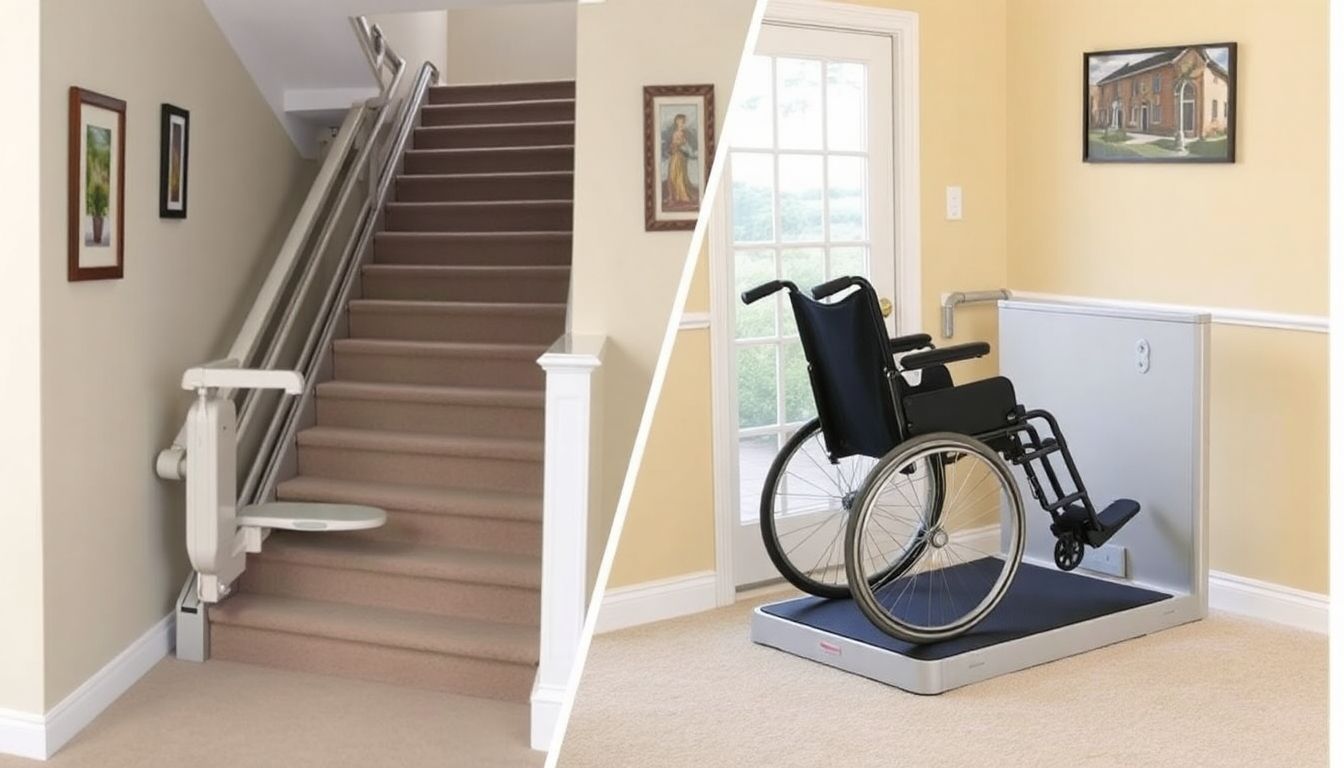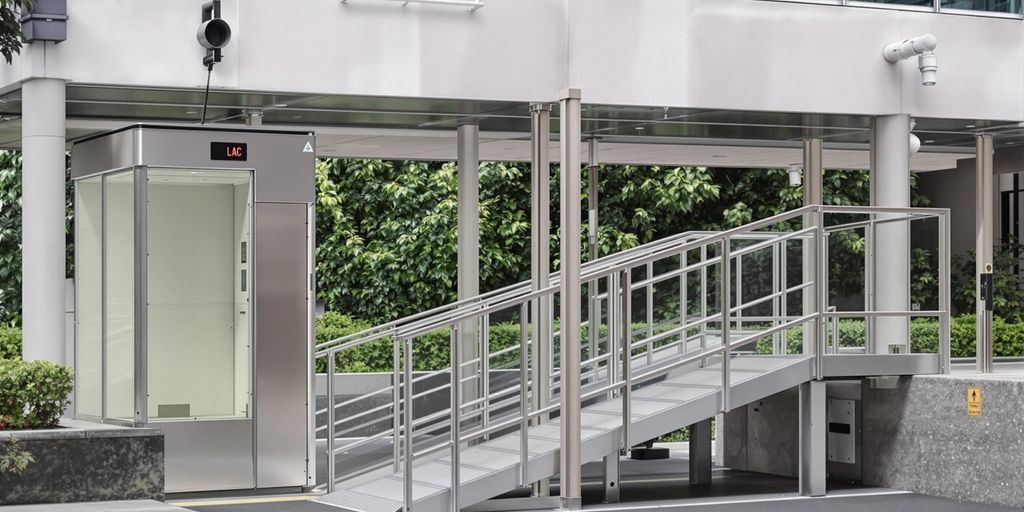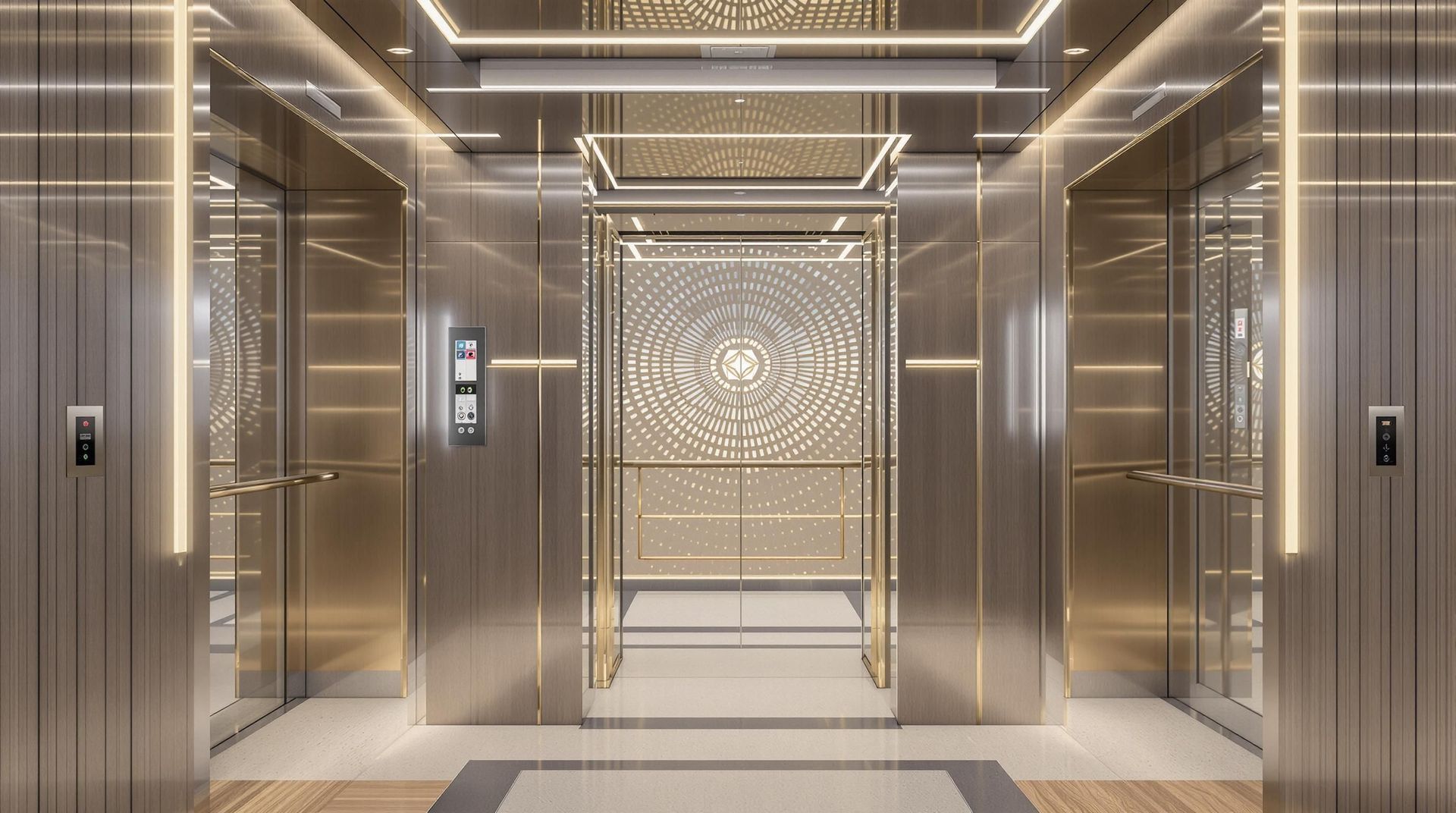How Much Does It Cost to Convert a Van for Wheelchair Accessibility?
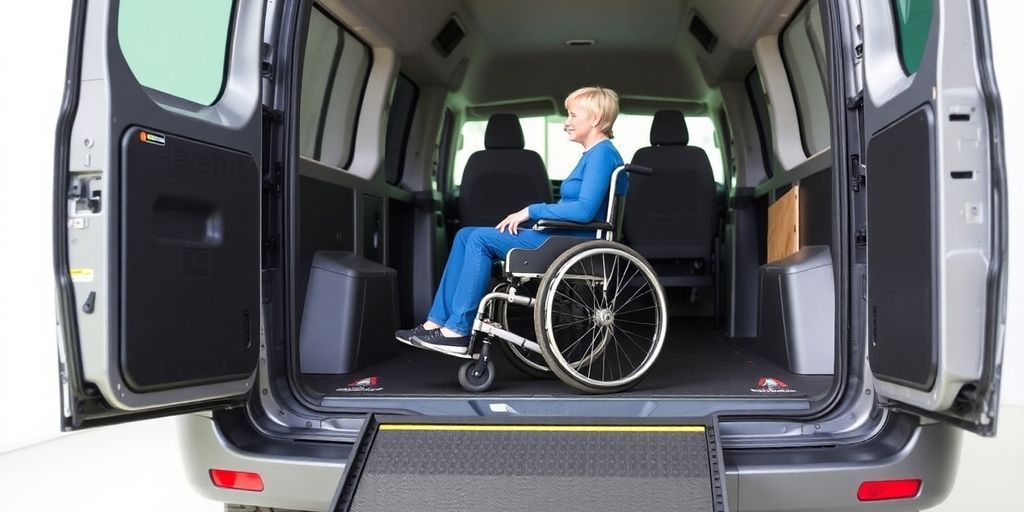
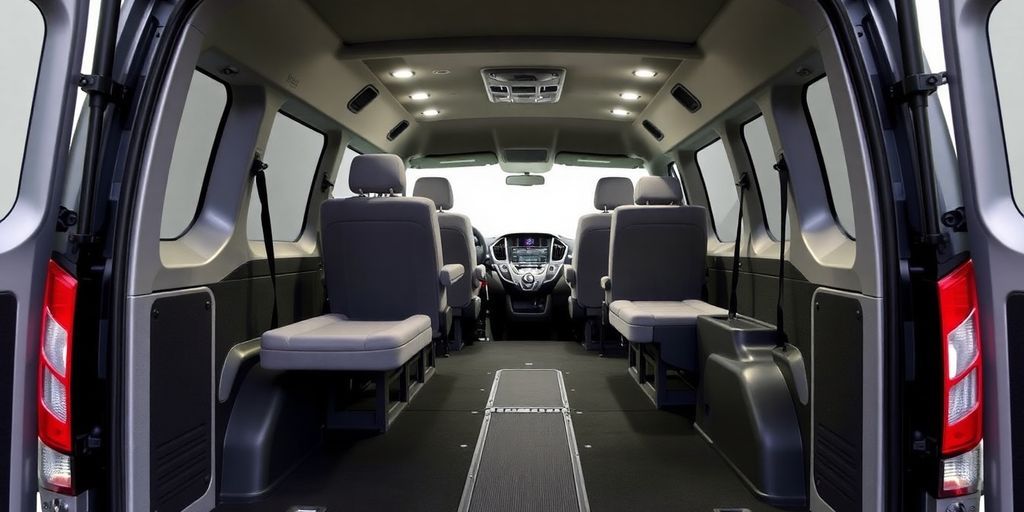
Converting a van for wheelchair accessibility can be a significant investment, and understanding the costs involved is crucial for anyone considering this option. Whether you're adapting an existing vehicle or exploring new purchases, knowing what to expect can help you make informed decisions. In this article, we’ll break down the various factors that influence the cost of wheelchair van conversion and provide insights into the process.
Key Takeaways
- The cost of wheelchair van conversion varies widely based on vehicle type and features, typically ranging from $20,000 to $45,000.
- Factors like the vehicle's age, mileage, and condition can significantly impact conversion costs.
- Choosing between side-entry and rear-entry conversions affects both price and accessibility.
- Financing options include insurance coverage, government programs, and personal loans to help manage costs.
- Converting your current vehicle can be more cost-effective than buying a new wheelchair-accessible van.
Understanding The Cost of Wheelchair Van Conversion
Factors Influencing Conversion Costs
So, you're thinking about converting a van to be wheelchair accessible? Great! But before you get too far, let's talk about money. The price can vary wildly, and it's important to understand why. Several things affect the final bill.
- Vehicle Condition: Is your van old or new? Does it have a ton of miles? A newer, well-maintained van will generally be cheaper to convert than an older, beat-up one.
- Type of Conversion: A basic ramp conversion will cost less than a full-blown, lowered-floor conversion with all the bells and whistles. Mobility Specialist can help you decide.
- Features and Upgrades: Power doors, specialized seating, hand controls – all these add to the cost. Think about what you really need versus what would be nice to have.
It's easy to get caught up in all the cool features, but remember to prioritize your needs and stick to your budget. Unexpected costs always seem to pop up, so having a little wiggle room is always a good idea.
Average Price Range for Conversions
Okay, let's get down to brass tacks. What can you expect to pay? Well, a basic conversion can start around $20,000, but it can easily climb to $45,000 or even higher for more complex modifications. Keep in mind that this is in addition to the cost of the van itself. A new, fully converted van can easily run you between $65,000 and $98,000. It's a significant investment, no doubt.
Additional Costs to Consider
Don't forget about the hidden costs! It's not just the conversion itself you need to budget for. Here are a few things that often get overlooked:
- Maintenance: Modified vehicles sometimes require specialized maintenance, which can be more expensive than regular car repairs.
- Insurance: Your insurance rates might go up after the conversion. Check with your insurance company to see how it will affect your premiums. Local mobility dealer can help you with this.
- Registration and Taxes: Depending on your state, you might have to pay additional registration fees or taxes on the modifications.
Types of Wheelchair Van Conversions
Side-Entry vs. Rear-Entry Conversions
When it comes to wheelchair van conversions, one of the first decisions you'll face is whether to go with a side-entry or a rear-entry configuration. Each has its own set of advantages and disadvantages, so it really boils down to your specific needs and preferences.
- Side-entry vans are great if you frequently park in tight spots, as they allow you to enter and exit the vehicle without needing a lot of space behind you.
- Rear-entry vans, on the other hand, can be more budget-friendly and might be a better option if you primarily travel with a caregiver who can assist with loading and unloading.
- Consider where you'll be parking most often and how much space you'll typically have to maneuver. This will help you determine which entry style is the best fit for your lifestyle. Think about the wheelchair accessible vans that will work best for you.
Ultimately, the choice between side-entry and rear-entry depends on your individual circumstances. Consider factors like parking availability, budget, and the level of assistance you require. Don't hesitate to visit a conversion specialist to see both options in person and get a feel for what works best for you.
Manual vs. Automatic Ramps
Another key decision is whether to opt for a manual or automatic ramp. Both serve the same basic purpose – providing a safe and easy way to enter and exit the van – but they differ significantly in terms of convenience and cost.
- Manual ramps are generally more affordable and require no electrical components, which can be a plus in terms of reliability.
- However, they do require some physical effort to operate, which might not be ideal for everyone.
- Automatic ramps, on the other hand, offer push-button convenience, making them a great choice for individuals with limited upper body strength or those who simply prefer a more effortless experience.
Custom Features and Upgrades
Beyond the basic ramp and entry configuration, there's a whole world of custom features and upgrades available to personalize your wheelchair van conversion. This is where you can really tailor the van to your specific needs and preferences.
- Consider things like power door openers, which can make entering and exiting the van even easier.
- Hand controls are a must for drivers with limited leg function.
- You can also upgrade the seating, add extra storage compartments, or even install a full entertainment system. The possibilities are endless!
It's important to note that the more custom features you add, the higher the overall cost of the conversion will be. So, it's a good idea to prioritize the features that are most important to you and contact your local mobility dealer to see what is possible.
Choosing The Right Vehicle for Conversion
Compatible Vehicle Models
Not all vehicles are created equal when it comes to wheelchair van conversions. Minivans are often the go-to choice because of their spacious interiors and adaptable designs. However, some SUVs and full-sized vans can also be converted. It's important to check with a conversion specialist to see if your current vehicle, or the one you're planning to buy, is a suitable candidate. Certain models are simply easier and more cost-effective to convert than others.
Here are a few things to keep in mind:
- Minivans generally offer the best combination of space and accessibility.
- Some SUVs can be converted, but it might require more extensive modifications.
- Full-sized vans provide ample space but can be more challenging to maneuver.
Before you get too attached to a specific vehicle, make sure it's actually convertible. It's a bummer to fall in love with a car only to find out it can't be adapted for your needs.
Importance of Vehicle Condition
The condition of the vehicle plays a big role in the overall cost and success of the conversion. A vehicle with existing mechanical issues or significant wear and tear might not be the best choice. You'll want to start with a solid foundation to avoid additional expenses down the road.
Consider these points:
- A well-maintained vehicle will likely have fewer hidden problems.
- Rust and corrosion can significantly increase conversion costs.
- Major mechanical repairs should be addressed before starting the conversion.
Mileage and Year Considerations
While a newer vehicle might seem like the obvious choice, it's not always the most practical. Older vehicles can be perfectly suitable for conversion, especially if they've been well-maintained. However, mileage and age can impact the vehicle's lifespan and reliability. Finding the right balance between cost and condition is key.
Here's what to think about:
- Higher mileage vehicles might require more frequent maintenance.
- Older vehicles could have outdated safety features.
- A thorough inspection is essential, regardless of the vehicle's age or mileage.
Financing Options for Wheelchair Van Conversions
Insurance Coverage for Conversions
When thinking about converting a van for wheelchair accessibility, it's easy to focus on the initial cost of the conversion itself. But don't forget about insurance! You'll want to make sure your insurance policy covers the modifications made to your vehicle. It's not always a given, and you don't want to be stuck with a huge bill if something happens.
- Talk to your insurance provider before the conversion.
- Get written confirmation of coverage.
- Understand how the conversion affects your premiums.
It's a good idea to shop around and compare quotes from different insurance companies. Some specialize in vehicles with mobility equipment and may offer better rates or more comprehensive coverage.
Government Assistance Programs
Did you know there are government programs that can help with the cost of wheelchair van conversions? It's worth looking into! These programs are designed to help people with disabilities achieve greater independence. Navigating the bureaucracy can be a pain, but the potential savings are significant. The financing options available can make a big difference.
- The Department of Veterans Affairs (VA) offers assistance to eligible veterans.
- State-level programs vary, so check with your local agencies.
- Non-profit organizations sometimes provide grants or financial aid.
Personal Loans and Financing
If government assistance isn't enough, or you don't qualify, personal loans and financing are another option. Interest rates can vary widely, so it's important to shop around and compare offers. Don't just go with the first loan you find. Take your time and do your research.
- Check with your bank or credit union first.
- Consider online lenders for competitive rates.
- Read the fine print carefully before signing anything.
Benefits of Converting Your Existing Vehicle
Cost Savings Compared to New Vans
One of the biggest advantages of converting your current vehicle is the potential for significant cost savings. New wheelchair accessible vans can be quite expensive, often costing a lot more than a conversion. You're essentially saving money on the base vehicle price. Think of it this way:
- Lower initial investment.
- Avoid depreciation of a new vehicle.
- Potentially lower sales tax.
Converting your existing van allows you to spread out the expenses, making accessible transportation more attainable without breaking the bank. It's a smart financial move for many.
Maintaining Familiar Features
When you buy a new van, you have to get used to everything – the seat adjustments, the mirrors, the sound system. But when you convert your existing vehicle, you get to keep all the things you already like. It's about keeping the comfort and familiarity you've grown accustomed to. This can include:
- Your preferred seating position.
- Existing entertainment system.
- Familiar driving dynamics.
Customization Options
Converting your existing van opens up a world of customization. You're not limited to the pre-set options of a new accessible van. You can tailor the conversion to your specific needs and preferences. This includes:
- Choosing the type of ramp or lift.
- Selecting specific seating arrangements.
- Adding personalized storage solutions.
With a conversion, you get a wheelchair accessible vehicle that truly fits your lifestyle.
The Conversion Process Explained
Step-by-Step Conversion Overview
The process of converting a van for wheelchair accessibility involves several key stages. First, a thorough assessment of the vehicle is conducted to determine its suitability for conversion. This includes evaluating the vehicle's structural integrity and mechanical condition. Next, the chosen conversion company will remove the interior components that will be replaced or modified. The actual conversion begins with cutting and reinforcing the chassis to accommodate the lowered floor or ramp system. After the structural modifications, the ramp or lift mechanism is installed and tested for smooth and safe operation. Finally, the interior is customized with wheelchair restraints, seating adjustments, and other accessibility features. The entire process is followed by rigorous safety inspections to ensure compliance with industry standards. It's a complex process, so make sure you're working with a reputable company.
Timeline for Completion
The time it takes to convert a van can vary significantly based on the complexity of the conversion and the availability of parts. A standard conversion, such as a lowered floor with a ramp, might take anywhere from two to four weeks. More complex conversions, involving custom modifications or specialized equipment, can extend the timeline to six weeks or longer. Factors that can influence the timeline include the specific vehicle model, the type of ramp or lift being installed, and any additional customization requests. It's always best to get a clear estimate from the conversion company upfront, understanding that unforeseen issues can sometimes arise. Keep in mind that time is a factor if you are considering converting your car to a wheelchair accessible vehicle.
Choosing a Reliable Conversion Company
Selecting the right conversion company is essential for a successful and safe outcome. Here are some things to consider:
- Experience and Reputation: Look for companies with a proven track record and positive customer reviews. Check online forums and review sites to gauge their reputation.
- Certifications and Compliance: Ensure the company is certified and complies with all relevant safety standards and regulations. This demonstrates their commitment to quality and safety.
- Warranty and Support: A reliable company will offer a comprehensive warranty on their work and provide ongoing support after the conversion is complete.
- Customization Options: A good conversion company should be able to accommodate your specific needs and preferences, offering a range of customization options.
- Transparency and Communication: The company should be transparent about their pricing, process, and timeline, and maintain open communication throughout the conversion.
Choosing a conversion company is a big decision. Don't rush it. Take the time to research different companies, compare their offerings, and ask plenty of questions. A reputable company will be happy to answer your questions and provide you with all the information you need to make an informed decision.
Common Misconceptions About Wheelchair Van Conversions
Myths About Cost and Affordability
One of the biggest things I hear is that converting a van for wheelchair accessibility is always super expensive, like unachievable for most people. That's not always true. Yes, it can be a significant investment, but there are ways to make it more affordable.
- Consider a rear-entry conversion, which is often cheaper than a side-entry.
- Look into used vans that are in good condition as a base for the conversion.
- Get quotes from multiple conversion companies to compare prices.
It's easy to get scared off by the initial price tag, but with some research and smart choices, it's possible to find a conversion that fits your budget. Don't let the myths about cost stop you from exploring your options.
Understanding Warranty Implications
People often worry that converting their van will void the original manufacturer's warranty. This isn't necessarily the case.
- The original warranty usually remains valid for parts of the van not affected by the conversion.
- The conversion company typically provides a separate warranty specifically for the conversion work itself.
- It's super important to understand the terms of both warranties before proceeding.
Perceived Limitations of Converted Vans
Some folks think that converted vans are somehow less capable or reliable than vans originally built for wheelchair accessibility. That's just not true. A well-done conversion can be just as good, and sometimes even better, because it's customized to your specific needs.
- Converted vans can be tailored to your exact requirements, offering a level of personalization you might not find in pre-built models.
- Modern conversion techniques are very advanced, ensuring safety and reliability.
- You get to keep the features of your existing vehicle that you already love.
Many people have wrong ideas about what it takes to convert a van for wheelchair use. Some think it’s too expensive or that it’s only for certain types of disabilities. In reality, there are many options available that can fit different budgets and needs. If you want to learn more about the truth behind wheelchair van conversions, visit our website for helpful information and resources!
Wrapping It Up
So, there you have it. Converting a van for wheelchair access can cost anywhere from $10,000 to over $150,000, depending on what you need. It’s a big decision, and there are a lot of factors to think about, like the van's age and condition. If you already have a vehicle that can be modified, it might save you some cash compared to buying a brand-new accessible van. Just remember, it’s not just about the money; it’s about finding the right fit for your lifestyle. Whether you choose to convert or buy new, make sure to do your homework and talk to the experts. They can help you figure out what works best for you.
Frequently Asked Questions
What is the average cost to convert a van for wheelchair access?
The average cost for converting a van to be wheelchair accessible can range from $20,000 to $45,000, depending on the modifications needed.
What factors affect the cost of conversion?
Several factors can influence the cost, including the type of van, its condition, the type of ramp or lift needed, and any additional custom features.
Can any van be converted for wheelchair access?
Not all vans can be converted. It’s best to check with a mobility dealer to see if your van model is suitable for conversion.
How long does the conversion process take?
The conversion process can take several weeks, typically around 4 to 5 weeks, depending on the complexity of the modifications.
Are there financing options available for van conversions?
Yes, there are various financing options available, including insurance coverage, government assistance programs, and personal loans.
What are the benefits of converting my existing vehicle?
Converting your current vehicle can save money compared to buying a new accessible van, and it allows you to keep familiar features and customize it to your needs.
First Responders & Military Discount + VA Approved
PRODUCTS AND SERVICES
North Georgia Mobility | All Rights Reserved | Powered By Flypaper | Privacy Policy

